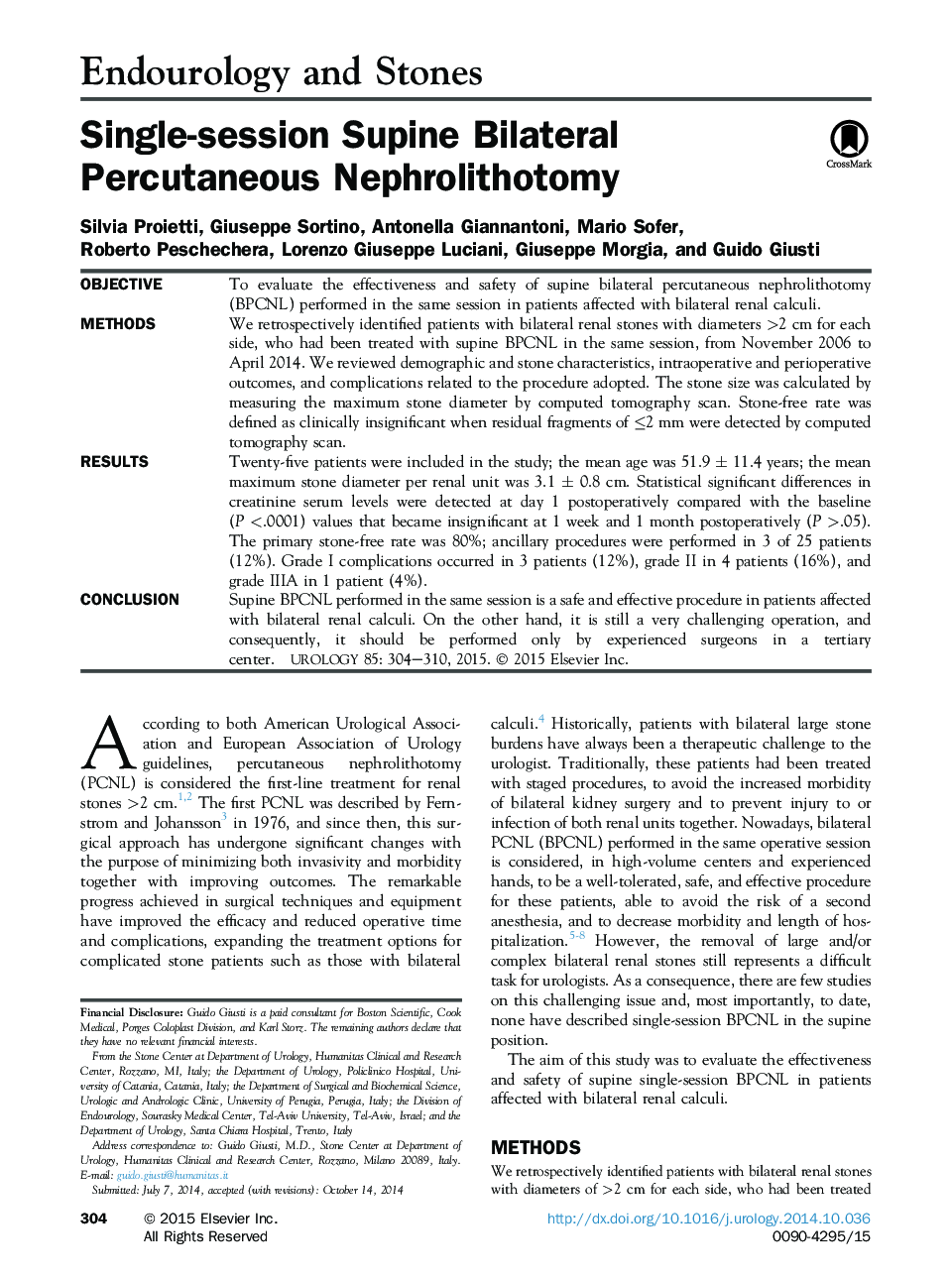| Article ID | Journal | Published Year | Pages | File Type |
|---|---|---|---|---|
| 3899296 | Urology | 2015 | 7 Pages |
ObjectiveTo evaluate the effectiveness and safety of supine bilateral percutaneous nephrolithotomy (BPCNL) performed in the same session in patients affected with bilateral renal calculi.MethodsWe retrospectively identified patients with bilateral renal stones with diameters >2 cm for each side, who had been treated with supine BPCNL in the same session, from November 2006 to April 2014. We reviewed demographic and stone characteristics, intraoperative and perioperative outcomes, and complications related to the procedure adopted. The stone size was calculated by measuring the maximum stone diameter by computed tomography scan. Stone-free rate was defined as clinically insignificant when residual fragments of ≤2 mm were detected by computed tomography scan.ResultsTwenty-five patients were included in the study; the mean age was 51.9 ± 11.4 years; the mean maximum stone diameter per renal unit was 3.1 ± 0.8 cm. Statistical significant differences in creatinine serum levels were detected at day 1 postoperatively compared with the baseline (P <.0001) values that became insignificant at 1 week and 1 month postoperatively (P >.05). The primary stone-free rate was 80%; ancillary procedures were performed in 3 of 25 patients (12%). Grade I complications occurred in 3 patients (12%), grade II in 4 patients (16%), and grade IIIA in 1 patient (4%).ConclusionSupine BPCNL performed in the same session is a safe and effective procedure in patients affected with bilateral renal calculi. On the other hand, it is still a very challenging operation, and consequently, it should be performed only by experienced surgeons in a tertiary center.
